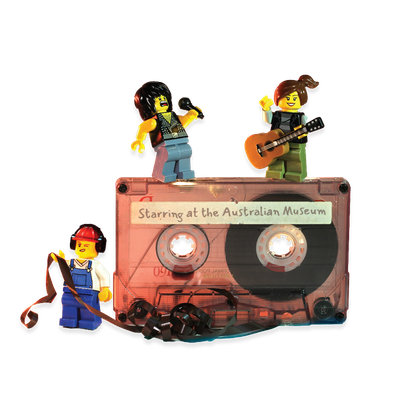Your search returned 2817 results
By Page Type
By Tag
- fish (966)
- blog (696)
- fishes of sydney harbour (401)
- First Nations (299)
- Blog (236)
- AMRI (169)
- archives (164)
- Eureka Prizes (146)
- Aboriginal and Torres Strait Islander (135)
- insect (126)
- Ichthyology (124)
- geoscience (109)
- minerals (102)
- climate change (99)
- podcast (94)
- Fish (91)
- Anthropology (89)
- International collections (80)
- Minerals Gallery (78)
- wildlife of sydney (78)
- Labridae (77)
- frog (74)
- gemstone (70)
- photography (66)
- history (64)
- Mollusca (60)
- gem (59)
- staff (59)
- Birds (56)
- Gems (56)
- Indonesia (56)
- education (56)
- shark (55)
- AMplify (54)
- people (53)
- earth sciences (50)
- exhibition (50)
- past exhibitions (50)
- Gobiidae (48)
- sustainability (46)
- Pomacentridae (45)
- Serranidae (44)
- lifelong learning (42)
- science (42)
- Earth and Environmental Science (41)
- Syngnathidae (41)
- Ancient Egypt (40)
- Bali (40)
- bird (40)
- dangerous australians (40)
-
Tiger Cardinalfish, Cheilodipterus macrodon (Lacépède, 1802)
https://australian.museum/learn/animals/fishes/tiger-cardinalfish-cheilodipterus-macrodon/Tiger Cardinalfish, Cheilodipterus macrodon (Lacépède, 1802)
-
Pinstripe Butterflyfish, Chaetodon lunulatus Quoy & Gaimard, 1825
https://australian.museum/learn/animals/fishes/pinstripe-butterflyfish-chaetodon-lunulatus/Pinstripe Butterflyfish, Chaetodon lunulatus Quoy & Gaimard, 1825
-
Northern Broad-nosed Bat
https://australian.museum/learn/animals/bats/northern-broad-nosed-bat/Northern Broad-nosed Bat
-
Flute-nosed Bat
https://australian.museum/learn/animals/bats/flute-nosed-bat/Flute-nosed Bats, wrap their wings around their body like fruit bats but hold the wings away from their chest so that they act like an umbrella.
-
Pygmy Long-eared Bat
https://australian.museum/learn/animals/bats/pygmy-long-eared-bat/Very little is known about Pygmy Long-eared Bats but they are usually found near permanent water.
-
Arnhem Land Long-eared Bat
https://australian.museum/learn/animals/bats/arnhem-land-long-eared-bat/Arnhem Land Long-eared Bat
-
Bristle-nosed Freetail Bat
https://australian.museum/learn/animals/bats/bristle-nosed-freetail-bat/Bristle-nosed Freetail Bat
-
North Western Freetail Bat
https://australian.museum/learn/animals/bats/north-western-freetail-bat/North Western Freetail Bats appear to be restricted to mangroves and adjoining areas.
-
South-western Freetail Bat
https://australian.museum/learn/animals/bats/south-western-freetail-bat/South-western Freetail Bat
-
Discover more
2025 Australian Geographic Nature Photographer of the Year
Special exhibition
Free entry
Now open -
Discover more
Unfinished Business
Special exhibition
Free entry
Now open -
Discover more
Wansolmoana
Permanent exhibition
Free entry
Open daily -
Find out more
Burra
Permanent kids learning space
Free entry
10am - 4.30pm![]()
-
Discover more
Minerals
Permanent exhibition
Free entry
Open daily![]()




